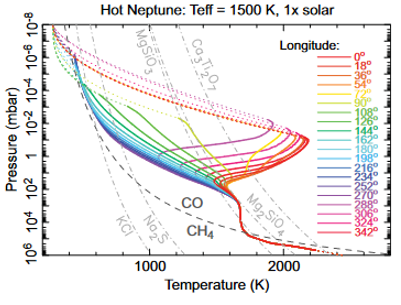ATMO is a 1D-2D atmospheric code for the study of the atmosphere of brown dwarfs and exoplanets. The code has originally been developed at the University of Exeter (http://exoclimatology.com) and is currently a collaboration between different groups across the globe. A unique feature of this code is the possibility to explore multi-dimensional (2D) steady states of the equatorial flows around the planet. This ability allows for the characterization of the deep long time-scale circulation that can lead to inflated giant planets, and the characterization of phase curves that will be observed with future space telescopes (e.g. JWST and ARIEL).

References:
- – Tremblin et al. – Fingering Convection and Cloudless Models for Cool Brown Dwarf Atmospheres
- – Tremblin et al. – Advection of Potential Temperature in the Atmosphere of Irradiated Exoplanets: A Robust Mechanism to Explain Radius Inflation
License: Creative Commons Attribution 4.0 International License (CC BY 4.0)
The main modules and associated developers are:
- – 1D and 2D newton solver: P. Tremblin
- – Radiative transfer: D. Amundsen, P. Tremblin
- – Opacities: D. Amundsen, M. Phillips, R. Ridgway, J. Goyal
- – Equilibrium chemistry: P. Tremblin, B. Drummond, J. Goyal
- – Condensation and rainouts: P. Tremblin, J. Goyal
- – Out-of-equilibrium chemistry: O. Venot, E. Hebrard, B. Drummond
- – Convection: P. Tremblin, M. Phillips
- – Retrieval: D. Sing